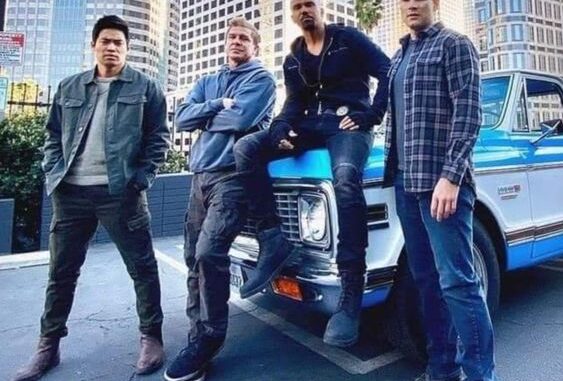
Introduction: The Intersection of Reality and Drama
Have you ever watched a SWAT episode and thought, “Is it really like that in real life?” If you’re a fan of high-stakes action, you’ve probably marveled at the intense, heart-pounding moments that make you sit on the edge of your seat. But what if I told you that behind all that dramatization lies a world of real-life heroes, tactical operations, and adrenaline-fueled decisions? In this article, we’ll dive deep into the real-life inspirations behind SWAT operations and how these experiences are portrayed—often dramatically—on your screens.
The Origin of SWAT Teams
What is a SWAT Team?
A SWAT (Special Weapons and Tactics) team is a specialized unit within law enforcement that is trained to handle high-risk operations, such as hostage rescues and counter-terrorism. These teams are composed of officers with advanced skills in firearms, negotiation, and tactical maneuvers.
Historical Context: The Birth of SWAT
The concept of SWAT originated in the 1960s in Los Angeles, primarily as a response to the increasing violence and civil unrest. The first team was formed to address situations where traditional policing methods were insufficient. This marked a significant shift in how law enforcement approached dangerous situations.
Real-Life SWAT Operations: The Truth Behind the Tactics
What Happens in a Real SWAT Operation?
Real-life SWAT operations are far more complex than what we see on TV. They involve extensive planning, intelligence gathering, and coordination with various law enforcement agencies. Each operation is meticulously crafted to minimize risks to officers and civilians alike.
Training: The Foundation of Success
SWAT officers undergo rigorous training that includes physical fitness, weapons proficiency, and scenario-based exercises. This training ensures they are prepared for any situation they might face, from active shooter scenarios to hostage negotiations.
Dramatization vs. Reality: How the Show Portrays SWAT Operations
The Art of Storytelling: Crafting the Narrative
Television shows often take creative liberties to enhance the drama. While they capture the essence of teamwork and heroism, they sometimes exaggerate or simplify real-life protocols for entertainment purposes.
Character Development: The Human Element
Characters in these shows often have rich backstories and emotional arcs that contribute to the drama. While this adds depth to the story, it’s essential to remember that real SWAT officers are trained professionals, not just dramatic archetypes.
Iconic SWAT Operations in History
The 1980 Iranian Hostage Crisis: A Pivotal Moment
One of the most significant events that shaped public perception of SWAT teams was the Iranian hostage crisis. This situation highlighted the need for specialized tactics and teams capable of handling such crises, ultimately influencing the development of SWAT units nationwide.
The Los Angeles Shootout of 1997: A Turning Point
The infamous shootout between police and bank robbers in North Hollywood demonstrated the critical need for heavily armed and well-trained SWAT teams. This event led to reforms in law enforcement tactics and a renewed focus on equipping SWAT teams with the necessary resources.
What the Show Gets Right About Real SWAT Operations
Teamwork and Communication: Key to Success
One of the most accurate portrayals of SWAT operations is the emphasis on teamwork and communication. In real-life situations, officers rely heavily on each other to make split-second decisions that can save lives.
Realistic Scenarios: Inspired by True Events
Many episodes are inspired by real-life incidents, allowing viewers to see how law enforcement responds to various crises. This connection to reality helps demystify the operations and humanizes the officers involved.
Common Misconceptions About SWAT Teams
Are SWAT Teams Just for High-Risk Situations?
While SWAT teams are often called for high-risk operations, they also engage in community outreach and prevention strategies. This broader role is sometimes overlooked in dramatizations.
Do SWAT Officers Only Work in Urban Areas?
Contrary to popular belief, SWAT teams can be found in suburban and rural areas as well. The need for specialized tactical response is universal, regardless of location.
The Impact of SWAT on Public Perception
Shaping Views: How Media Influences Society
The portrayal of SWAT teams in popular culture can significantly impact public perception. Shows that dramatize the operations can lead to misconceptions about the realities of law enforcement.
The Fine Line Between Entertainment and Reality
While dramatization is essential for storytelling, it’s crucial to maintain a balance that respects the real-life experiences of SWAT officers and the communities they serve.
Conclusion: The Heroic Truth Behind the Drama
As you binge-watch your favorite SWAT drama, take a moment to appreciate the real-life inspirations behind it. These officers face challenges daily that most of us can only imagine. While the show may dramatize their experiences, the essence of teamwork, courage, and sacrifice remains unchanged. By understanding the realities of SWAT operations, we can foster a greater appreciation for these unsung heroes who protect our communities.
FAQs
1. How realistic are the portrayals of SWAT teams on TV?
While some elements are accurate, many portrayals exaggerate situations for dramatic effect. The core values of teamwork and bravery, however, are often well-represented.
2. What kind of training do SWAT officers undergo?
SWAT officers receive extensive training in firearms, negotiation, and tactical strategies to prepare them for high-risk operations.
3. Are SWAT teams only called for hostage situations?
No, SWAT teams respond to various high-risk scenarios, including active shooter situations, counter-terrorism efforts, and drug raids.
4. How can I learn more about real SWAT operations?
You can explore documentaries, books, and interviews with former SWAT officers to gain insights into their experiences and training.
5. What is the public’s perception of SWAT teams?
Public perception varies, often influenced by media portrayals. While many view them as heroes, some may hold misconceptions about their operations and purpose.
